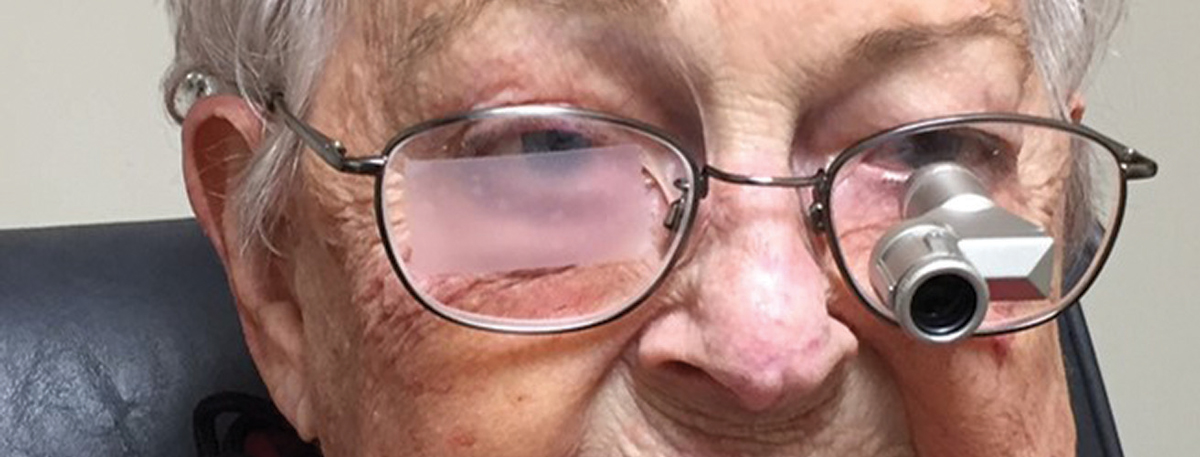 |
| The first step toward helping patients who experience uncorrectable vision loss is to accurately and objectively document the nature of their vision loss. A new questionnaire can help. Photo: David Lewerenz, OD. Click image to enlarge. |
Clinical innovation and research in vision-threatening eye diseases have predominantly been geared toward helping those with impaired central vision from conditions like age-related macular degeneration. Unfortunately, this has left many unanswered questions on the effectiveness of vision rehabilitation for peripheral field loss caused by conditions of glaucoma or retinal degeneration. To help bridge the gap, one new study had researchers develop and validate a novel patient-reported outcome (PRO) measure to assess vision-related function in those with severe visual compromise. Their findings were recently published in American Journal of Ophthalmology.
The prospective study—which included 116 participants—was designed with the development of a 127-item questionnaire based on previous qualitative interview study with the participants. Those involved either had severe peripheral field loss due to retinitis pigmentosa (RP) or glaucoma and completed the Likert-scaled questionnaire over the phone. All included either had a horizontal extent of visual field <20° (RP) or mixed or generalized Stage 4 to 5 defect using the Enhanced Glaucoma Staging System in the better seeing eye.
The final questionnaire, called the Low Vision-Severely Constricted Peripheral Eyesight (LV-SCOPE), only included 53 items from six categories: mobility, object localization, object recognition, reading, social functioning and technology. The 74 items removed were done so for low item information, item redundancy, low internal consistency, as well as other reasons. Test-retest stability was good when calculating person ability scores for each of the six individual domains.
The study authors relay that as both the US and global populations grow in age, targeted vision rehabilitation for peripheral field loss will also grow, making their findings relevant for future use. By parsing the items on the questionnaire to include only the most relevant in the final form, the researchers now provide a helpful tool in the field of vision rehabilitation.
Some items were related to themes that did not possess adequate psychometric properties to include in the final version of LV-SCOPE. For instance, in the somewhat-structured interviews, participants often referenced difficulties driving or complete cessation of driving. However, almost all those included in the validation study had already ceased driving.
Also discussed is the very low amount of differential item functioning, which relates to varying item behavior across certain specified groups, often existing in groups by gender, diagnosis, etc. These groups may display differing probabilities of a response, and items displaying this behavior are often eliminated from instruments to make more generalizable. However, the author only found this to occur in the solely eliminated item of diagnosis (glaucoma vs. RP). The groups of gender, age, education and diagnosis of all of the remaining items displayed no evidence of differential item functioning.
Overall, the authors believe that “this instrument fills a gap in the literature and the PROs available to clinicians and researchers aiming to assess vision-related function in this sizable and growing population,” according to their paper on the study.
Ehrlich JR, Andrews C, Kumagai A, et al. Development and validation of The Low Vision Severely Constricted Peripheral Eyesight (LV-SCOPE) Questionnaire. Am J Ophthalmol. August 23, 2023. [Epub ahead of print]. |

